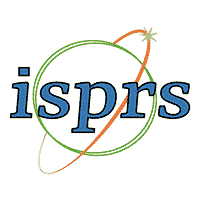Topic Menu
► Topic MenuTopic Editors

Advanced Research in Precipitation Measurements
Topic Information
Dear Colleagues,
The observation of precipitation systems and their microphysical processes is an important component for a variety of hydrological and meteorological studies. The technological development of microwave link, satellite remote sensing, and dual polarization radar improve the knowledge of precipitation microphysical processes and enable instantaneous rainfall estimation. However, due to the indirect and remotely based observation of hydrometers in a fluctuating atmospheric environment, such advanced precipitation measurements are subject to high uncertainty. The improvement of hardware and their signal processing is significant for the quality of rainfall observations and forecasts. In addition, the effects of observations on atmospheric processes and atmospheric phenomenology are essential for a better understanding of the water cycle. Topics to be addressed include, but are not limited to, the following:
- Quantitative precipitation estimation;
- Studies on the microphysical aspects of precipitation systems using weather radars;
- Data fusion among different precipitation measurements;
- Precipiation data calibration or validation methodologies;
- Precipiation nowcasting algorithms/precipitation forecasting.
Prof. Dr. Qiang Dai
Dr. Jun Zhang
Topic Editors
Keywords
- precipitation
- microwave link
- satellite remote sensing
- weather radar
- GPM
Participating Journals
| Journal Name | Impact Factor | CiteScore | Launched Year | First Decision (median) | APC |
|---|---|---|---|---|---|

Atmosphere
|
2.5 | 4.6 | 2010 | 15.8 Days | CHF 2400 |

Remote Sensing
|
4.2 | 8.3 | 2009 | 24.7 Days | CHF 2700 |

Sustainability
|
3.3 | 6.8 | 2009 | 20 Days | CHF 2400 |

ISPRS International Journal of Geo-Information
|
2.8 | 6.9 | 2012 | 36.2 Days | CHF 1700 |

Land
|
3.2 | 4.9 | 2012 | 17.8 Days | CHF 2600 |

MDPI Topics is cooperating with Preprints.org and has built a direct connection between MDPI journals and Preprints.org. Authors are encouraged to enjoy the benefits by posting a preprint at Preprints.org prior to publication:
- Immediately share your ideas ahead of publication and establish your research priority;
- Protect your idea from being stolen with this time-stamped preprint article;
- Enhance the exposure and impact of your research;
- Receive feedback from your peers in advance;
- Have it indexed in Web of Science (Preprint Citation Index), Google Scholar, Crossref, SHARE, PrePubMed, Scilit and Europe PMC.

